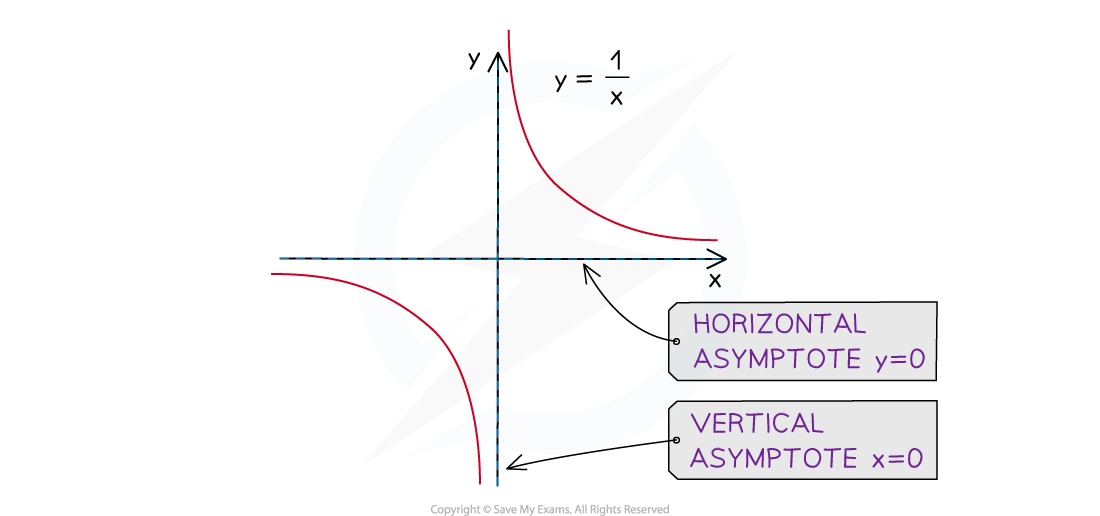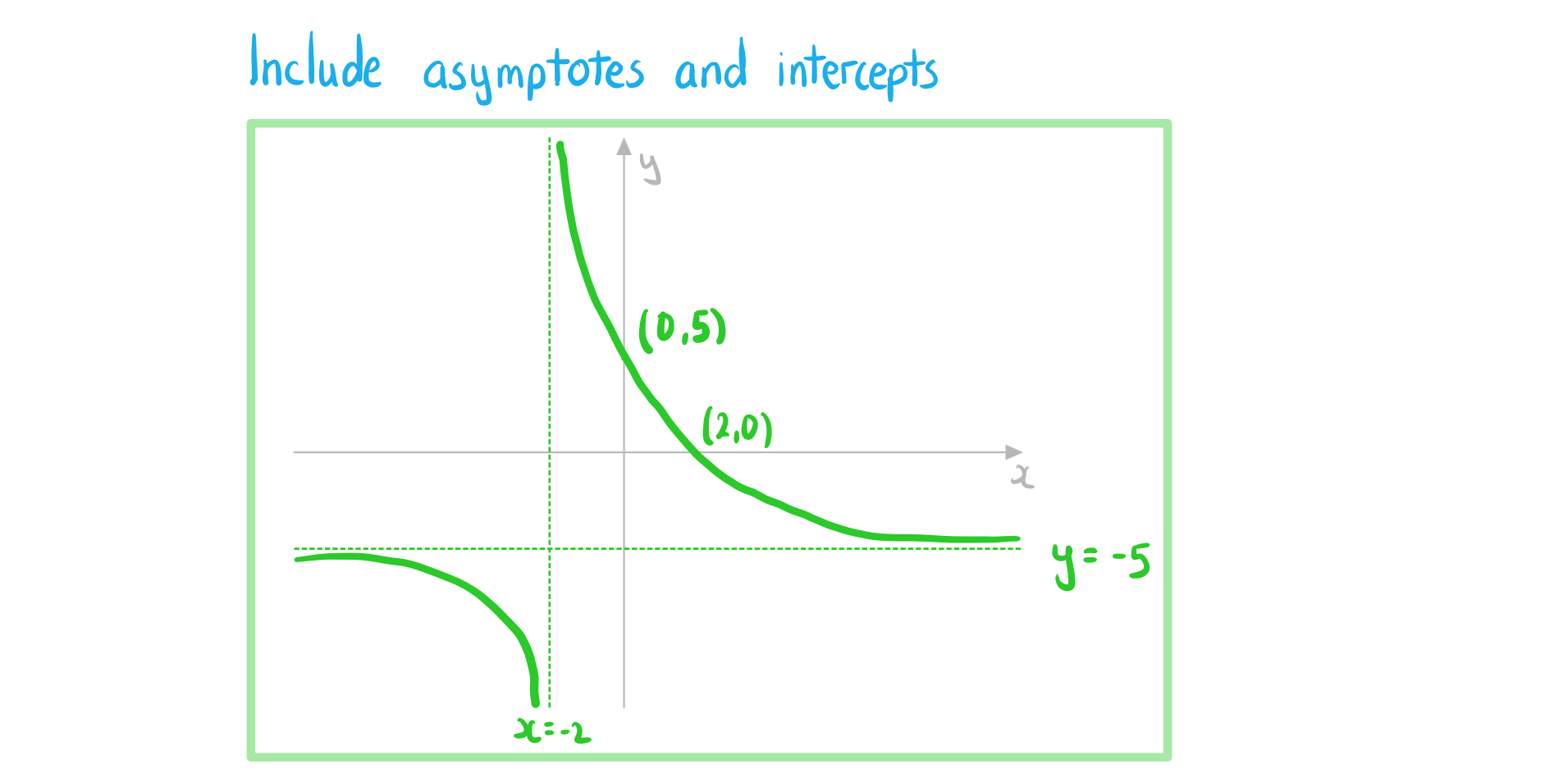Reciprocal Functions & Graphs
What is the reciprocal function?
- The reciprocal function is defined by
- Its domain is the set of all real values except 0
- Its range is the set of all real values except 0
- The reciprocal function has a self-inverse nature
What are the key features of the reciprocal graph?
- The graph does not have a y-intercept
- The graph does not have any roots
- The graph has two asymptotes
- A horizontal asymptote at the x-axis:
- This is the limiting value when the absolute value of x gets very large
- A vertical asymptote at the y-axis:
- This is the value that causes the denominator to be zero
- A horizontal asymptote at the x-axis:
- The graph has two axes of symmetry
- The graph does not have any minimum or maximum points

Linear Rational Functions & Graphs
What is a rational function?
- A rational function is of the form
- Its domain is the set of all real values except
- Its range is the set of all real values except
- The reciprocal function is a special case of a rational function
What are the key features of rational graphs?
- The graph has a y-intercept at
provided
- The graph has one root at
provided
- The graph has two asymptotes
- A horizontal asymptote:
- This is the limiting value when the absolute value of x gets very large
- A vertical asymptote:
- This is the value that causes the denominator to be zero
- A horizontal asymptote:
- The graph does not have any minimum or maximum points
- If you are asked to sketch or draw a rational graph:
- Give the coordinates of any intercepts with the axes
- Give the equations of the asymptotes

Exam Tip
- If you draw a horizontal line anywhere it should only intersect this type of graph once at most
- The only horizontal line that should not intersect the graph is the horizontal asymptote
- This can be used to check your sketch in an exam
Worked Example
The function is defined by
for
.
a)
Write down the equation of
(i)
the vertical asymptote of the graph of  ,
,
(ii)
the horizontal asymptote of the graph of  .
.

b)
Find the coordinates of the intercepts of the graph of  with the axes.
with the axes.

c)
Sketch the graph of  .
.

